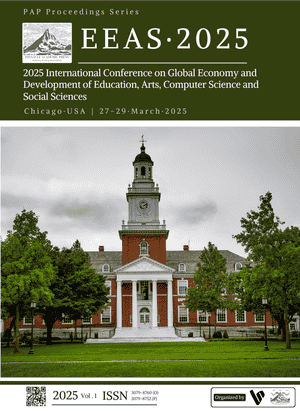The Paradox of Social Security: The Distribution of Costs and Benefits
Keywords:
social security, welfare distribution, system reform, economic impactAbstract
This study aims to analyze the burden and welfare distribution of China’s social welfare framework and explore the economic impact and optimization plan of social security reform. Through a review of existing literature and a comparison of domestic and foreign experiences, combined with China’s unique socio-economic background, the study adopts a combination of data analysis and case studies to focus on the financial challenges of the social security system in China, the contribution burden of enterprises and individuals, and the welfare access of different groups. The results show that the current social security system is facing great financial pressure, especially in terms of pension payments and social insurance coverage. There is an unbalanced contribution and benefit relationship, and some groups are not well protected. By comparing international experience, this study proposes reform directions for optimizing the social security system, including strategies such as reasonably adjusting social security tax rates, expanding security coverage, and improving the welfare level of low-income groups. The conclusion points out that social security reform should focus on the balance between fairness and sustainability and formulate policies that are in line with China’s national conditions to ensure the long-term stable operation of the social security system and promote sustainable economic and social development.
References
1. N. A. Barr, The Welfare State as Piggy Bank: Information, Risk, Uncertainty, and the Role of the State, Oxford, U.K.: Oxford Univ. Press, 2001. ISBN: 978-0199246595.
2. M. Feldstein, "Rethinking social insurance," Am. Econ. Rev., vol. 95, no. 1, pp. 1-24, Mar. 2005, doi: 10.1257/0002828053828545.
3. A. Banerjee, R. Hanna, B. A. Olken, and D. S. Lisker, "Social protection in the developing world," J. Econ. Lit., vol. 62, no. 4, pp. 1349-1421, 2024, doi: 10.1257/jel.20241646.
4. P. Diamond, "Social security," Am. Econ. Rev., vol. 94, no. 1, pp. 1-24, Mar. 2004, doi: 10.1257/000282804322970670.
5. N. Ikeda, M. Yamaguchi, I. Kashino, T. Sugiyama, K. Miura, and N. Nishi, "Evaluation of public health and economic impacts of dietary salt reduction initiatives on social security expenditures for cardiovascular disease control in Japan," Hypertens. Res., pp. 1-9, 2025, doi: 10.1038/s41440-025-02108-z.
6. S. Castellani, "On the fringes of social protection: new Southern European labour migration to Germany," Int. Migr., vol. 63, no. 1, p. e12760, 2025, doi: 10.1111/imig.12760.
7. S. Peng and L. Wang, "Does participation in social security increase Chinese farmers’ willingness of homestead withdrawal?" Land, vol. 14, no. 3, p. 461, 2025, doi: 10.3390/land14030461.
8. T. Liu and L. Sun, "Pension reform in China," J. Aging Soc. Policy, vol. 28, no. 1, pp. 15-28, 2016, doi: 10.1080/08959420.2016.1111725. PMID: 26549002.
Downloads
Published
Issue
Section
License
Copyright (c) 2025 Zhixiong Wang, Huajie Liu (Author)

This work is licensed under a Creative Commons Attribution 4.0 International License.



